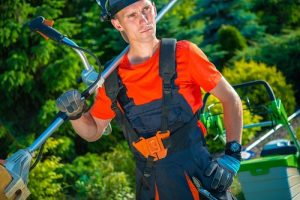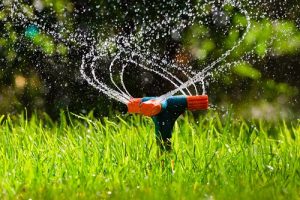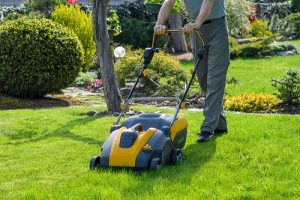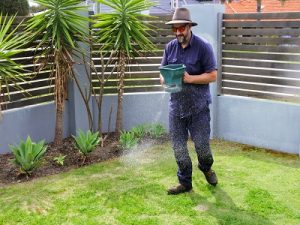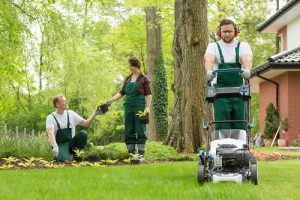 Make your outdoor space the envy of the neighborhood with these 5 expert-backed tricks for perfect lawn care! Regular watering and fertilization are just part of a comprehensive yard maintenance plan. Throw in proper pest control, weed management, and other considerations to keep your home’s curb appeal high—and provide an enjoyable environment for family time. With our tips as guidance, you’ll be thrilled by how vibrant and healthy your lawn can look!
Make your outdoor space the envy of the neighborhood with these 5 expert-backed tricks for perfect lawn care! Regular watering and fertilization are just part of a comprehensive yard maintenance plan. Throw in proper pest control, weed management, and other considerations to keep your home’s curb appeal high—and provide an enjoyable environment for family time. With our tips as guidance, you’ll be thrilled by how vibrant and healthy your lawn can look!
Lawn Care Tips
Water Properly
Healthy and vibrant grass can be yours with proper watering habits. Make sure to take your time when hydrating the lawn by deeply soaking it in order for strong root growth– you’ll know if more water is needed through a simple stick or screwdriver test! It’s also best to make use of those early morning hours, as this will help lock in their hydration needs throughout the day.
Fertilize your lawn
Regular fertilization is an essential part of lawn care in Myrtle Beach as it keeps the soil healthy. However, there are choices to make when deciding which type. Organic fertilizer may be more natural but synthetic provides highly effective nutrients without damaging our environment. Planning your application time carefully can have a tremendous impact on plant health; while beneficial during active growth seasons, avoid using it in times of drought or extreme heat – this could risk stressing out plants unnecessarily!
Get rid of weeds
Weed removal can make all the difference for lawns and gardens. Controlling weeds through available methods helps keep your desired plants healthy by preventing competition for essential resources in a yard or garden.
Keeping weeds at bay doesn’t necessarily require harsh chemical treatments. Hand-pulling and hoeing can be effective options, especially for smaller weed growths that are just beginning to sprout up. For tougher roots or denser patches of weeds, you may have more success with a sturdy hoe slicing them off at their base before carefully removing them from your garden bed – taking care not to damage the rest of your plants in the process! An added bonus is using mulch as an organic solution which serves two purposes: blocking sunlight so germinating weed seeds are stifled while also helping retain moisture around desired vegetation throughout dry periods.
Prune regularly
Regular pruning is an essential part of yard maintenance. Cut back dead or overgrown branches to maximize the growth potential of your plants, while also ensuring their ideal shape and size! Just be sure you know when’s right for each type; improper techniques can irreversibly harm your foliage – harmless trimming one day could lead to discouraging destruction the next.
Pest Control
Pest control is not just important for the health of your plants and property – it can play a key role in public safety. By controlling pests, you reduce potential damage to yards while preventing diseases from spreading between humans and animals. Investing in pest control will help keep both people and their yards safe by protecting against unwelcome invaders that may cause harm or destruction.
Call Conner’s Lawn Care Service now if you’re looking for an expert who can take care of your lawn.
Like our Facebook page for more great info about lawn care services.
Conner’s Lawn Care Service
Myrtle Beach, SC
843-504-4901
http://connerslawncare.com/
